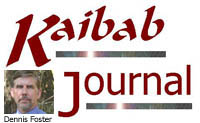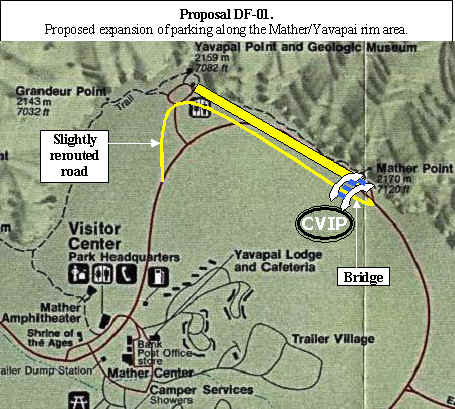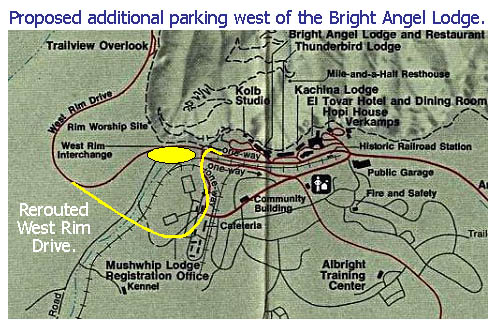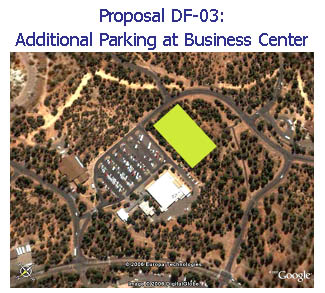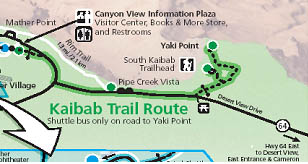|
|
|
||
|
Grand
Canyon Parking Ideas: by Dennis Foster (April-May 2006) |
|||
|
|
|||
|
For years, I been critiquing the transportation plans being put forth by
officials at Grand Canyon National Park. I was asked to submit a
paper to the Goldwater Institute, which they published as Grand
Canyon Transportation Planning: The Railroading of Visitors in
October of 1999. Over the years, I have also given many special
lecture presentations on this topic at NAU. And, while I have
offered up some differing solutions to the parking problem, the one that
was likely to strike the most responsive chord was to increase the
existing infrastructure. Still, I would get asked, "Exactly
what would you do?" Although I didn't have a
specific answer, I didn't think it was really that difficult an
exercise. But, if the debate starts to hinge on a specific
alternative for parking, I decided that it was worthy of extended analysis
and that specifics should be offered up for consideration. I put
together a proposal and
handed off a copy to Senator Kyl. It also circulated among other members of the Arizona
Congressional delegation, although I have not heard any particular response
with regard to these ideas. I previously posted this proposal as Grand
Canyon Parking: A Common Sense Solution to Everyday Problems.
See it for more depth on these issues. In the Spring of 2006, the National Park Service held a series of "open houses" to solicit ideas, and comments, from the public with regard to a new effort at putting together a plan to deal with the congestion problems at Grand Canyon. Gone, at least for now, is the idea of a rail system. I decided to take the NPS at their word and re-tooled my commentary, edited it into five specific proposals for their consideration. Some are new, and weren't in my earlier report. It is expected that sometime during the summer of 2006 the park service will issue an environmental impact statement with specific alternatives under consideration. Then, we will be able to tell whether any of these ideas struck a chord with someone from the park service. The proposals appeared in my blog, and they can still be found in the archives (the dates, below, are hyperlinked to the blog entry). However, here they are, all in one spot. As a lead-in, I have included an editorial I wrote for the local paper about the park service's proposal. |
|||
|
|
|||
|
|
|||
|
|
|||
|
To see some better park maps, follow this link to the Grand Canyon web site. |
|||
|
|
|||
|
To
see some better park maps, follow this
link to the Grand Canyon web site. |
|||
|
|
|||
|
To
see some other park maps, follow this
link to the Grand Canyon web site. |
|||
|
|
|||
|
Portion
of Grand Canyon Shuttle Bus Map, showing where |
|||
|
|
|||
|
|
|||
|
|
|||
